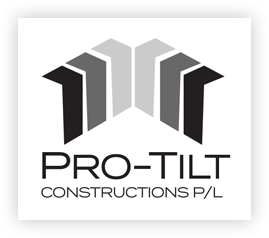Key Considerations in Warehouse Construction
10 July 2023Warehouse construction involves unique considerations to create a functional and efficient space for storage, distribution, and other commercial activities. Whether you’re planning to build a new warehouse or renovate an existing one, careful planning and attention to key factors are essential for a successful project. In order to develop a facility that fits your operating objectives and maximises production, we’ll examine the major factors in warehouse construction in this blog.
Site Selection and Layout
Choosing the right site for your warehouse is crucial. Consider factors such as proximity to transportation networks, accessibility for trucks and vehicles, availability of utilities, and future expansion possibilities. Once the site is selected, the layout of the warehouse should be optimised for efficient workflow, material handling, and storage capacity. Consider the location of loading docks, storage areas, office space, and traffic flow within the facility.
Building Materials and Structural Design
The choice of building materials and structural design impacts the durability, energy efficiency, and long-term maintenance of your warehouse. Choose materials that provide adequate insulation, strength, and resistance to weather conditions. Steel or concrete structures are commonly used for warehouse construction due to their durability and versatility. Additionally, consider incorporating sustainable design principles to reduce energy consumption and lower operating costs.
Clear Height and Column Spacing
Clear height and column spacing are critical considerations in warehouse design. Clear height refers to the vertical distance from the floor to the lowest overhead obstruction, such as lighting fixtures or ventilation systems. The adequate clear height allows for the efficient stacking of goods and using forklifts or other material handling equipment. Similarly, column spacing should be planned to accommodate racking systems and ensure unobstructed movement within the warehouse.
Loading and Unloading Facilities
Efficient loading and unloading facilities are essential for warehouse operations. Plan the number and layout of loading docks based on the volume of inbound and outbound shipments. Consider features such as dock levellers, overhead doors, and sufficient manoeuvring space for trucks. Incorporate systems that streamline the loading and unloading process, such as conveyors or automated equipment, to improve productivity and reduce turnaround time.
Fire Safety and Security
Warehouse safety is paramount. Implement comprehensive fire safety measures, including adequate fire suppression systems, fire-rated walls, and clearly marked escape routes. Install security systems, such as surveillance cameras and access control systems, to protect the facility and its contents. Consider additional security features like fencing, lighting, and alarm systems to deter unauthorised access and safeguard valuable inventory.
Future Expansion and Flexibility
A well-designed warehouse should allow for future expansion and adaptability to changing business needs. Consider the potential for growth and design the facility with expansion in mind. Incorporate flexible layouts, modular construction techniques, and systems that can be easily modified or reconfigured as operations evolve. This ensures that your warehouse remains functional and accommodates future growth without major disruptions or costly renovations.
Ready to embark on your warehouse construction project? Reach out to Pro-Tilt Constructions today for expert guidance and top-quality construction services. Feel free to check out our construction services to know how our experienced team can help you with your warehouse construction project.
Optimized by: Netwizard SEO

